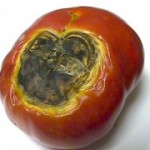Non-Pathogenic Disorders-Tomatoes
go.ncsu.edu/readext?187100
en Español / em Português
El inglés es el idioma de control de esta página. En la medida en que haya algún conflicto entre la traducción al inglés y la traducción, el inglés prevalece.
Al hacer clic en el enlace de traducción se activa un servicio de traducción gratuito para convertir la página al español. Al igual que con cualquier traducción por Internet, la conversión no es sensible al contexto y puede que no traduzca el texto en su significado original. NC State Extension no garantiza la exactitud del texto traducido. Por favor, tenga en cuenta que algunas aplicaciones y/o servicios pueden no funcionar como se espera cuando se traducen.
Português
Inglês é o idioma de controle desta página. Na medida que haja algum conflito entre o texto original em Inglês e a tradução, o Inglês prevalece.
Ao clicar no link de tradução, um serviço gratuito de tradução será ativado para converter a página para o Português. Como em qualquer tradução pela internet, a conversão não é sensivel ao contexto e pode não ocorrer a tradução para o significado orginal. O serviço de Extensão da Carolina do Norte (NC State Extension) não garante a exatidão do texto traduzido. Por favor, observe que algumas funções ou serviços podem não funcionar como esperado após a tradução.
English
English is the controlling language of this page. To the extent there is any conflict between the English text and the translation, English controls.
Clicking on the translation link activates a free translation service to convert the page to Spanish. As with any Internet translation, the conversion is not context-sensitive and may not translate the text to its original meaning. NC State Extension does not guarantee the accuracy of the translated text. Please note that some applications and/or services may not function as expected when translated.
Collapse ▲
A case of blossom end rot.
Blossom End-Rot of Tomato, Pepper, and Watermelon
This resource from NC State University outlines the strategies to prevent or reduce blossom-end rot, a disorder caused by a lack of calcium in the developing fruit, resulting in decay on the bottom of the fruit.
Soil Salinity: Effect on Vegetable Crop Growth
Salinity is a major problem affecting crop production all over the world: 20% of cultivated land in the world, and 33% of irrigated land, are salt-affected and degraded. This process can be accentuated by climate change, excessive use of groundwater (mainly if close to the sea), increasing use of low-quality water in irrigation, and massive introduction of irrigation associated with intensive farming.
Management of Non-pathogenic Fruit Disorders of Tomato in Organic Production Systems
Tomatoes are susceptible to a variety of non-pathogenic fruit disorders. This article addresses some of the more common disorders, identifying the symptoms and causes with photos. Management recommendations are suitable for organic production.
Managing Tomato Diseases Successfully
As part of Cornell University’s resources for commercial growers, there are several diseases affecting tomato caused by fungi, oomycetes, bacteria, viruses, and nematodes.
Tomato Diseases and Disorders
This publication from Iowa State Cooperative Extension places emphasis on prevention, while also addressing diagnosis of symptoms and separating physiological disorders from insect and disease damage.
| < < < Diseases |
Reviewed 8/24/2022


